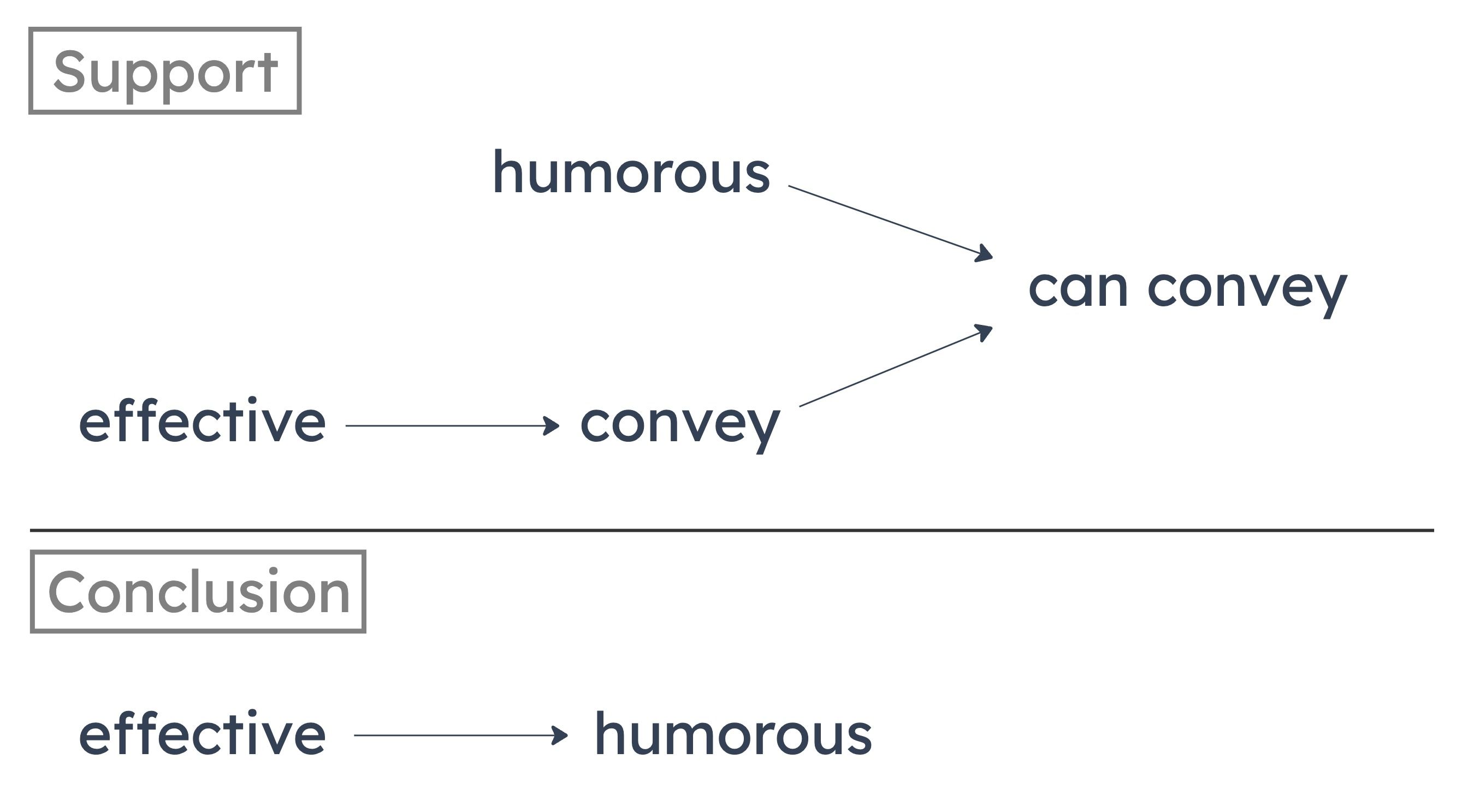LSAT 140 – Section 2 – Question 03
LSAT 140 - Section 2 - Question 03
December 2013You need a full course to see this video. Enroll now and get started in less than a minute.
Target time: 0:57
This is question data from the 7Sage LSAT Scorer. You can score your LSATs, track your results, and analyze your performance with pretty charts and vital statistics - all with a Free Account ← sign up in less than 10 seconds
| Question QuickView |
Type | Tags | Answer Choices |
Curve | Question Difficulty |
Psg/Game/S Difficulty |
Explanation |
|---|---|---|---|---|---|---|---|
| PT140 S2 Q03 |
+LR
+Exp
| Flaw or descriptive weakening +Flaw Conditional Reasoning +CondR | A
77%
165
B
3%
154
C
18%
161
D
1%
155
E
2%
157
|
132 146 161 |
+Medium | 149.441 +SubsectionMedium |
J.Y.’s explanation
You need a full course to see this video. Enroll now and get started in less than a minute.
Summarize Argument
The author concludes that humorous ads are the only effective ones. He supports this with the following premises:
(1) If something is humorous, it will attract people’s attention and allow a message to be conveyed.
(2) If an ad is effective, it must convey its message.

(1) If something is humorous, it will attract people’s attention and allow a message to be conveyed.
(2) If an ad is effective, it must convey its message.

Identify and Describe Flaw
This is the cookie-cutter flaw of confusing necessary and sufficient conditions. We know effective ads convey a message (and so they also can convey a message) but the author then assumes that they must be humorous. In other words, he treats “humorous” as necessary for “can convey” when it’s really only sufficient.
He argues that if an ad is effective, it must be humorous, since humorous ads can convey a message. But what if other ads, like emotional ads, can also convey a message? In that case, humorous ads might not be the only effective ones.
A
It takes for granted that nothing but humor can attract a person’s attention and hold it long enough for a message to be conveyed.
The author treats “humorous” as necessary for “can convey,” when it’s really only sufficient. He assumes that only humor can convey a message. But if scary or sad ads can also hold attention long enough to convey a message, then funny ads might not be the only effective ones.
B
It confuses attracting a person’s attention with holding a person’s attention long enough for a message to be conveyed.
The author actually distinguishes between these ideas by saying that if something is humorous it will not only attract attention but it will also hold attention long enough for a message to be conveyed.
C
It treats a necessary condition for an advertisement’s being effective as if it were a sufficient condition.
The author treats a sufficient condition for “can convey” as if it were a necessary condition. His conclusion isn’t about what is sufficient for an ad’s being effective; it’s about what is necessary for an ad’s being effective.
D
It uses two senses of the term “effective” without differentiating them.
This is the cookie-cutter flaw of equivocation, where the argument uses the same term in different ways. The author doesn't make this mistake; he uses “effective” clearly and consistently throughout his argument.
E
It takes for granted that an advertisement’s only purpose is to convey its message.
The author doesn’t assume this. In fact, he doesn’t make any claims about the purpose of ads at all. Instead, he assumes that humorous ads are the only effective ones, without considering that other kinds of ads might also be able to convey a message and be effective.
Take PrepTest
Review Results
LSAT PrepTest 140 Explanations
Section 1 - Logical Reasoning
- Question 01
- Question 02
- Question 03
- Question 04
- Question 05
- Question 06
- Question 07
- Question 08
- Question 09
- Question 10
- Question 11
- Question 12
- Question 13
- Question 14
- Question 15
- Question 16
- Question 17
- Question 18
- Question 19
- Question 20
- Question 21
- Question 22
- Question 23
- Question 24
- Question 25
Section 2 - Logical Reasoning
- Question 01
- Question 02
- Question 03
- Question 04
- Question 05
- Question 06
- Question 07
- Question 08
- Question 09
- Question 10
- Question 11
- Question 12
- Question 13
- Question 14
- Question 15
- Question 16
- Question 17
- Question 18
- Question 19
- Question 20
- Question 21
- Question 22
- Question 23
- Question 24
- Question 25
- Question 26
Section 3 - Logical Reasoning
- Question 01
- Question 02
- Question 03
- Question 04
- Question 05
- Question 06
- Question 07
- Question 08
- Question 09
- Question 10
- Question 11
- Question 12
- Question 13
- Question 14
- Question 15
- Question 16
- Question 17
- Question 18
- Question 19
- Question 20
- Question 21
- Question 22
- Question 23
- Question 24
- Question 25
- Question 26
Leave a Reply
You must be logged in to post a comment. You can get a free account here.